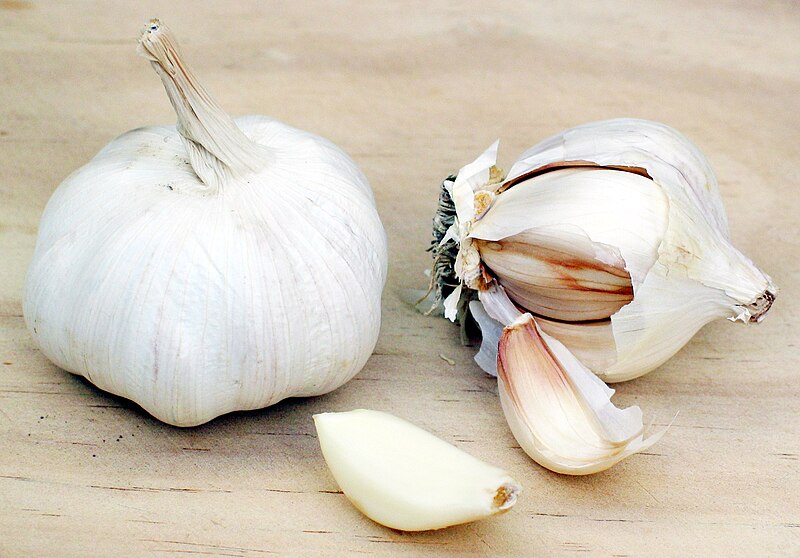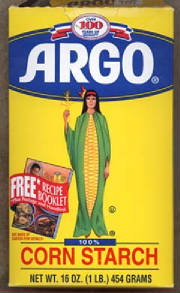Today I will be showing you how to make dishes like this:
(Pictured is Char Sui [roasted pork] fried rice and "Szechuan" Beef.)
These are quick and basic Chinese stir fry techniques that can be used with a variety of ingredients. Think of it as a template for basic stir fry.
Firstly, a wok is the only way to stir fry properly because it distributes the heat evenly as quickly. Also it allows for you to make a small well in the dish so that a corn starch slurry can be added in so flat bottom woks aren't really that useful. But as many of you know you can make Chinese food perfectly fine without a wok. It's just a preference and makes cooking much easier. Basic steps of stir fry:
It is best to have all the ingredients for your stir fry chopped, cut and prepped before you start a stir fry. Even though I don't always have it done...Also if you use meat for your stir fry sprinkle it with corn starch before use. This often "seals" in the juices, tenderize the meat and make it crisper when you stir fry.
Step 1: Heat wok
Step 2: Pour oil in the wok - wait until the oil smokes
Step 3: Add aromatics (garlic, ginger, chili peppers, Szechuan peppers)
Step 4: Once you really smell the aromatics add in the meat or the hearty vegetables.
Step 5: When the meat or the vegetables are cooked add in the rest of the vegetables that you will be using.
Step 6: Add in the sauces you will be using. Usually soy sauce and oyster sauce. This is the seasoning stage.
Step 7: Once the food is almost completely cooked move the ingredients away from the middle of the wok to create a small well. Water can be added at this stage if there isn't enough sauce in the stir fry as well.
Step 8: Add a corn starch slurry (later explained) into the well. Stir well
Step 9: Finish/Eat
First the go to ingredients that are commonly found in a Chinese Kitchen:
Garlic
Ginger
Light Soy Sauce
Oyster Sauce
Corn Starch
Hoisin
Black Bean Sauce
Chili Oil
Sesame Oil
Rice Vinegar
5 Spice Powder
White Pepper
Szechuan Peppers
Xiaoxing/ Shaoxing Wine
My brief introduction to the ingredients
Garlic is one of the most commonly used ingredients in a Chinese kitchen. It's often crushed with the side of the clever and just tossed into to any stir fry after adding the oil. In my family garlic was never minced for dishes. Rather, 2 cloves would be crushed until flat to release the garlic flavor and then tossed into a wok with hot oil.
Ginger unlike garlic is not used in every stir fry dish but it does add a deeper and slightly fresh flavor to dishes. It often goes into richer dishes such as beef stir fry or with fish. You can use it to marinade meat, especially if you're doing a BBQ dish, julinne with rounds of green onion over steamed fish with hot oil poured over and of course, you can take a small piece - smash it and toss it in with garlic for a stir fry. There are a lot of oil sauces which include ginger. Very versatile and very tasty.
Soy Sauce there are many varieties of soy sauce, for stir fry use light soy sauce. Light soy sauce has a lighter look, like the name implies is salty in flavor and light. It is used in almost all Chinese stir fry dishes. Dark soy sauce, is thicker and stronger than light soy sauce. It's fermented longer and has a very unique and sometimes overwhelming flavor. This is why it is only used for a handful of dishes and often as a marinade rather than a sauce.
Of course there are different soy sauces for different countries and different brands so it's a bit overwhelming. I stick to Pearl River Bridge as my brand for light soy sauce however, dark soy sauce I'm not as picky with. Kikkoman and Lee Kum Kee are also popular brands in the industry but the flavor always seemed off with those brands. Light soy sauce is primarily used in stir frying, sauces and dips. The only time I've used or seen dark soy sauce used has been for marinading for BBQs and a dish called Tau Yu Bak, which is braised pork belly with eggs - my mom makes it the best.
Oyster Sauce is made of oyster essence or concentrate. Unlike fish sauce which smells strongly of fish, oyster sauce has a mild oyster smell and is a rich mild flavor. Although not a necessity for stir fry it gives dishes a deeper flavor, "meatier" flavor. If you are a vegetarian, it's no real loss to forgo the oyster sauce. But it's common to put oyster sauce into beef dishes as well as vegetable dishes like Chinese broccoli to give the dish a deeper flavor. The sauce itself is salty, rich and sweet. I've even been able to caramelize beef and mushrooms with just oyster sauce. Tasty, tasty oyster sauce.
Corn Starch this is the ingredient that makes a Chinese stir fry sauce the consistency that you recognize most. Corn starch is the thickening agent, that is put into Chinese dishes to make the sauce a silky coat rather than just salty water. In order to keep the corn starch from clumping up a slurry is made. To do this you mix corn starch with water until it's a white liquid and then you pour it into the middle of your stir fry in order to make a thick and delicious sauce. This is the key ingredient for making stir fry look lovely.
So these are the key ingredients for most dishes! You can make almost any stir fry with those basic ingredients. Now for a few less common but also useful tools.
Hoisin Sauce is a sweet and salty sauce. It's often confused with plum sauce because it is so sweet. This is sauce is often used as a dip for moo shu or peking duck. It can also be used while cooking but should be used sparingly because it is so sweet. It's also a nice sauce for marinades especially for BBQ.
Black Bean Sauce now this sauce is very unique. It's fermented black beans...yeah, not everyone's taste. But it is a very nice thing if you like fermented black beans. If you've never had anything with black bean sauce, I suggest you smell it first and decide if it is for you. It's a very strong flavor. I for one love black bean sauce but it an acquired taste. It's very different than mexican black beans. You can use black bean sauce for any stir fry but I think beef can stand the strong black bean flavor the most or sturdy vegetables too. Like bell peppers or green beans.
Chili Oil is exactly what it sounds like. It's chili infused oil. I'm a huge fan of spice, so I add chili oil to my stir fry all the time or use it as a dip. The best time to add chili oil if you want spice is right before the dish is finished. If you don't the oil may burn and smoke so it's a smart idea to wait until the dish is almost complete or just put it on top as a condiment. I also use chili oil for dips, especially for dumplings. Also, if you like spice, you can add crushed dried chili peppers once you heat up the oil in the wok.
Sesame Oil I'm not the biggest fan of sesame oil because it is such a strong flavor. But it is a nice addition to a pantry. It is used in stir fry, especially with chicken. I don't advise using it in stir fry because it's so easy for it to over power all the flavors but it's nice in dips.
Rice Vinegar is a great addition to the pantry. It's not often used in regular stir fry unless you like things like sweet and sour or garlic sauces. This is the ingredient that is used to make dishes have a bit of a punch. I often use rice vinegar in stir fry with a sweet sauce. But this is a great addition if you like dipping sauces. I love dim sum so I love dipping sauces.
Chinese 5 Spice Powder is a great addition. However, this is not used in stir fry. This is used as a marinade for meats primarily. Usually fatty meats like pork or duck.
White Pepper is a great addition! Also not often used in stir fry, white pepper has a great flavor that is less bitting than black pepper. You use it the same way as black pepper and flavoring. It's great to flavor dumplings especially or minced meat.
Szechuan Peppers are used in Szechuan cooking mainly, which is often considered very spicy food. Unlike white pepper or black pepper it's not very spicy. Rather it has a tangy taste to it. It's great in stir fry but don't go over board. It has a strong flavor to it and the tangy taste can easily overwhelm a dish.
Xiaoxing Wine is a great addition. Like most wine in cooking it gives a more complex flavor. Xiaoxing wine should be cooked into a dish so that the alcohol melds into the dish. It has a nice sweet and fruity flavor that is great for dishes. It has a stronger flavor than regular rice wine.














Thanks for this guide, it was very useful and easy to follow. I hope that you can also make a guide on how to cook a stir fried chicken because that was also my favorite.
ReplyDelete